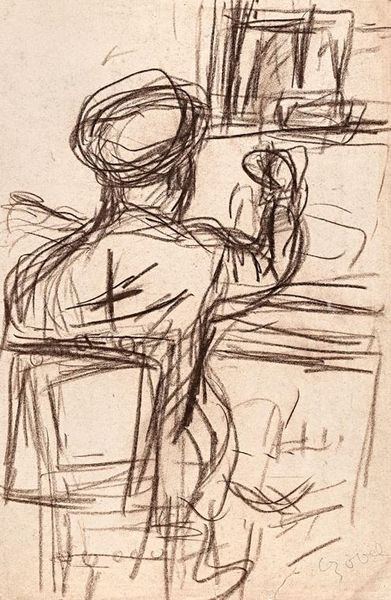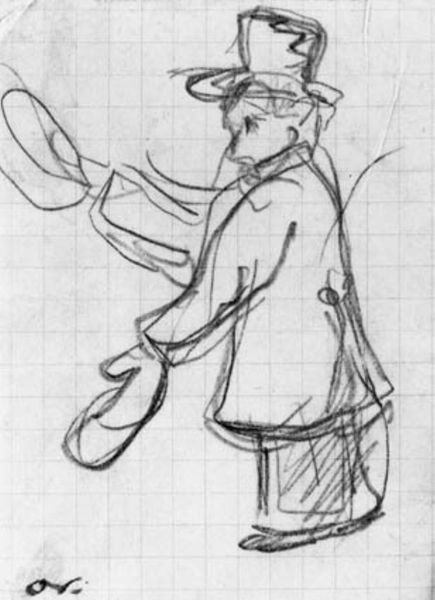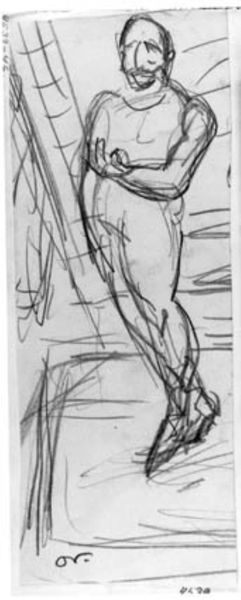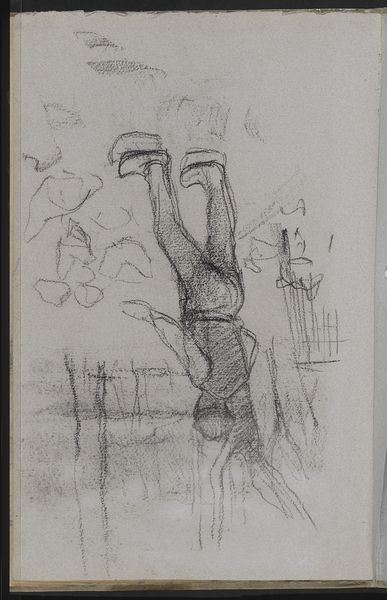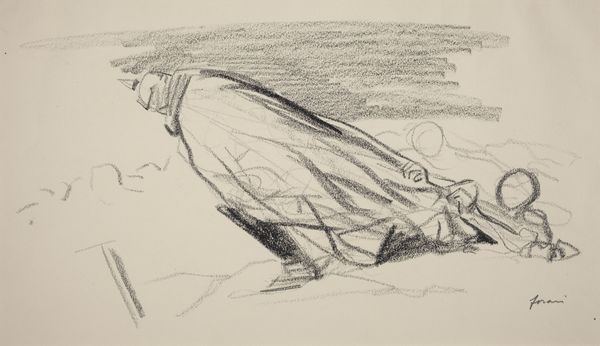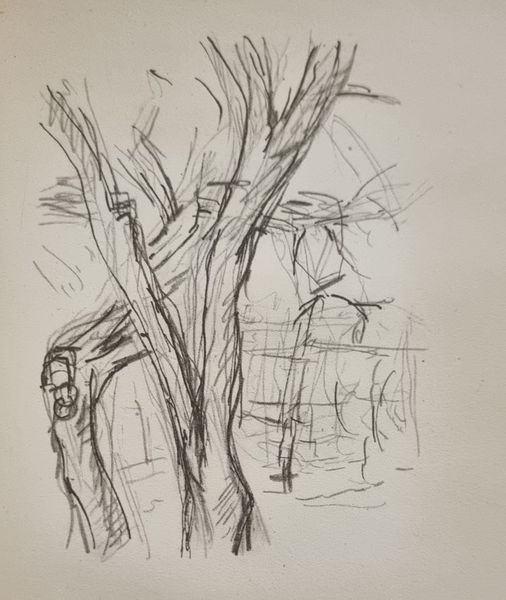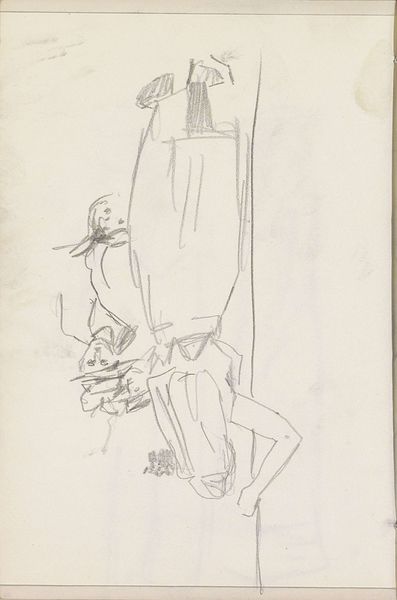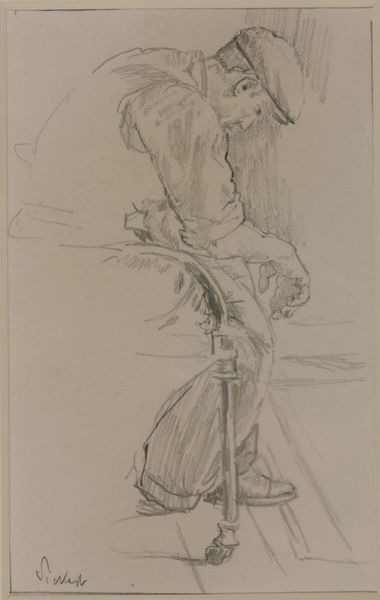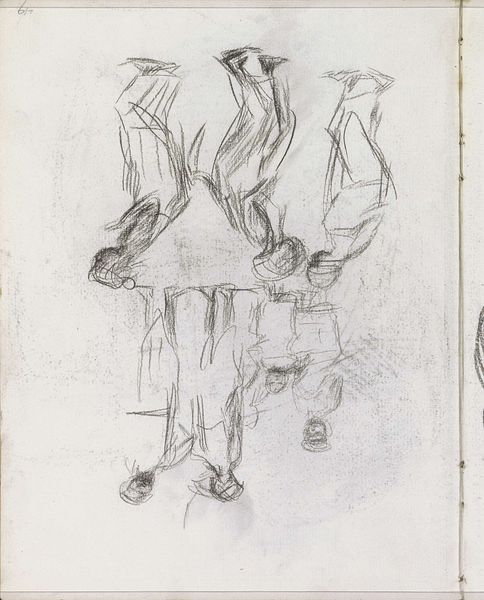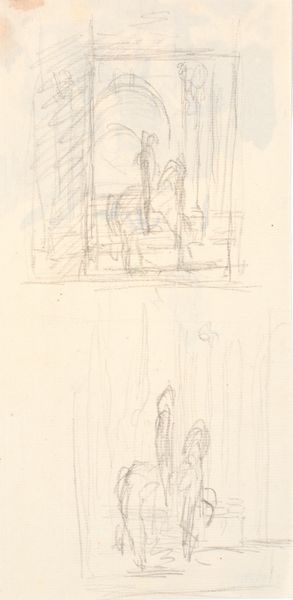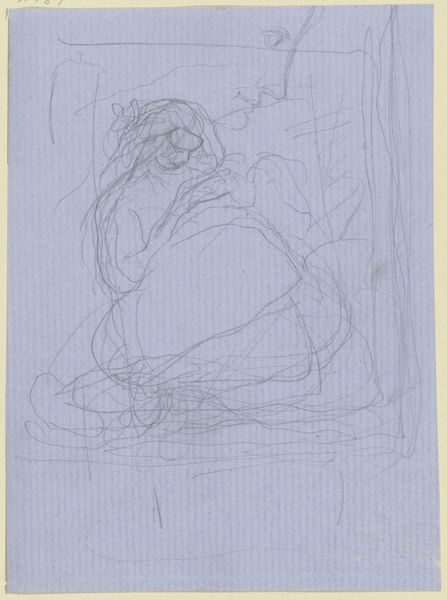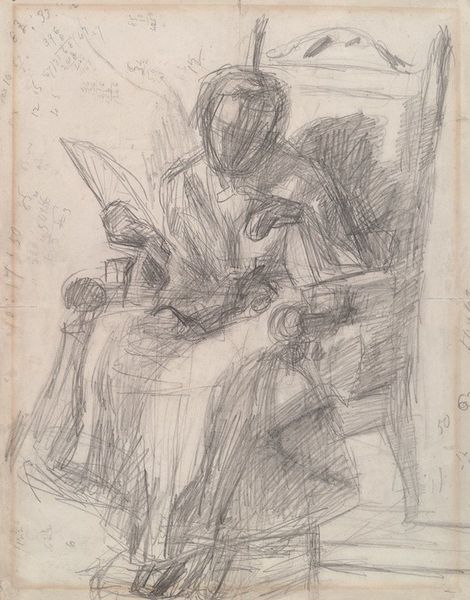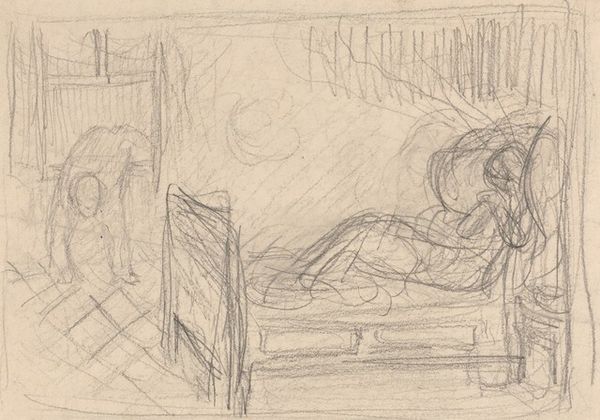
Dimensions: 247 mm (height) x 187 mm (width) (bladmaal)
Editor: So, here we have "Vandbærerske. Portugal" – that's "Water Carrier, Portugal" – a pencil drawing from 1911 by Othon Friesz, housed at the SMK in Copenhagen. It's a quick sketch, very impressionistic. The figure of the woman with the vessel seems so monumental compared to the indistinct background. What do you see in this piece, particularly in its historical context? Curator: The drawing strikes me as a very typical example of early 20th-century European fascination with “exotic” cultures. Friesz traveled to Portugal, and we see here an example of the “picturesque” local, made into a symbol of timelessness. The choice of pencil drawing flattens the visual field to capture immediate impressions, hinting at that cultural appropriation. Consider how travel and the subsequent artistic representation reinforced Europe’s sense of cultural superiority and the idea of the 'other'. Editor: That's fascinating. I was just seeing it as a simple figure study, but you're right, it speaks to a whole history of representation and power dynamics. Does the setting - the figures in the background - amplify that idea? Curator: Absolutely. The small, indistinct figures in the background function almost as stage props. They are a faceless crowd against which the water carrier stands out. Think about how this contributes to a sense of the Portuguese landscape as untouched, waiting to be "discovered" by European eyes, with its "unique" people singled out. It subtly reinforces existing power structures. Editor: I had not considered that. The seemingly innocent style masks quite a loaded cultural narrative. I’ll certainly think about these undercurrents when viewing other artworks from this period. Curator: Indeed. And always ask: who is doing the looking, and who is being looked at? That question unveils a wealth of historical insight.
Comments
No comments
Be the first to comment and join the conversation on the ultimate creative platform.
